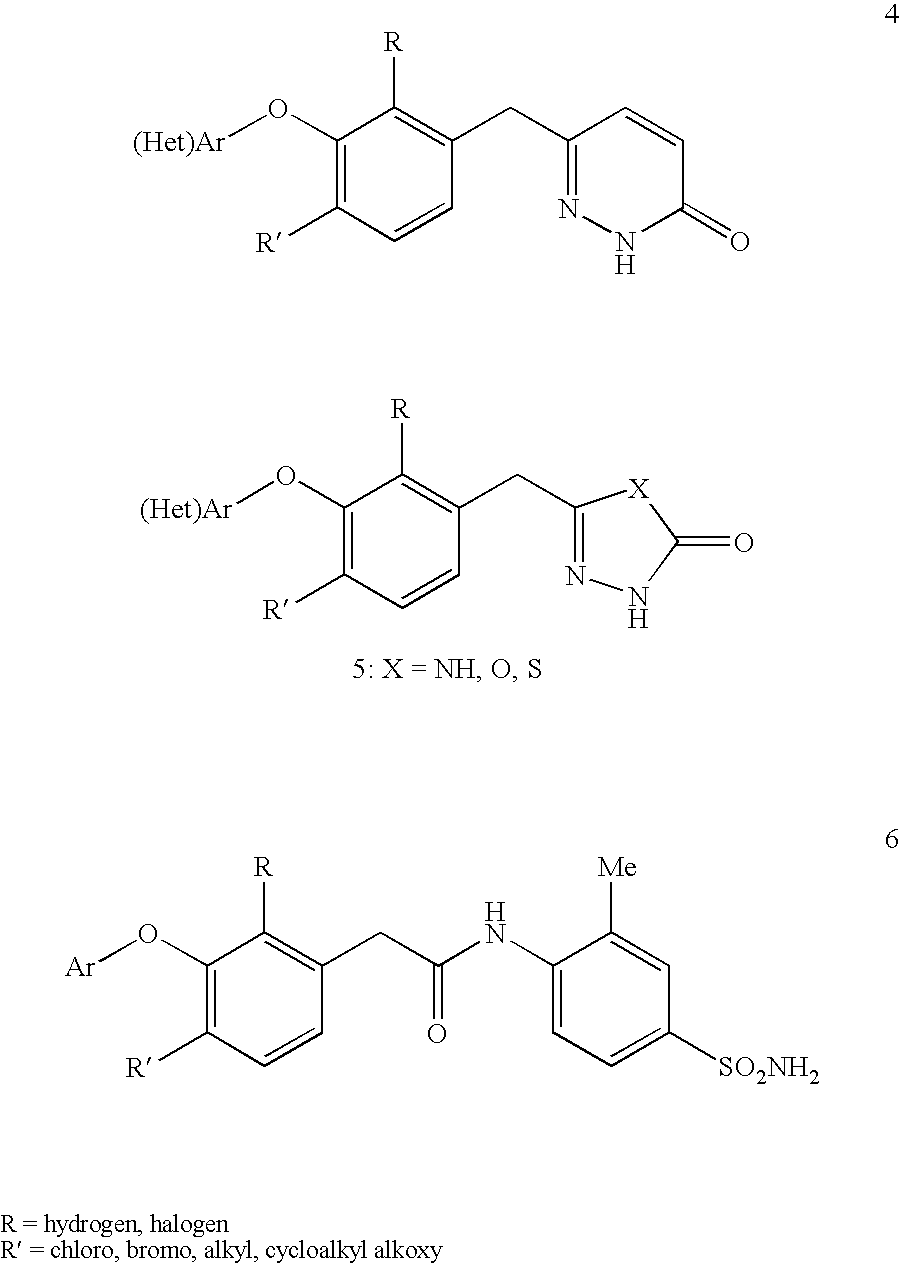Non-nucleoside reverse transcriptase inhibitors
a reverse transcriptase inhibitor and non-nucleoside technology, applied in the field of antiviral therapy, can solve the problems of slowed disease progression, significant therapeutic problems, and high viral load, and achieve the effect of reducing susceptibility to therapy
- Summary
- Abstract
- Description
- Claims
- Application Information
AI Technical Summary
Benefits of technology
Problems solved by technology
Method used
Image
Examples
reference example 1
3-Iodomethyl-5-methanesulfonyl-4-methyl-4H-[1,2,4]triazole (B-5b—SCHEME B)
[0115]step 1—Ethyl hydroxyacetate (99.8 g; 1.05 eq., 95%) and 4-methyl-3-thiosemicarbazide (96.0 g; 1.00 eq., 97%) were combined in a 2L-reactor equipped with a stirrer and reflux condenser. The reaction was stirred and heated under reflux overnight (the internal temperature drops from ca. 130° C. to 4-methyl-3-thiosemicarbazide 90° C. over this period). The reactor was configured for distillation and the distillation was continued until the internal temperature reached 130° C., then maintained under reflux until it dropped to ca. 100° C. Again, the reactor was configured for distillation, heated to 130° C. while distilling, then configured for reflux for 1 h. Finally, the reactor was again configured for distillation, 600 mL water was added, and distillation carried out while continually replacing distillate with water to drive off remaining ethanol. The solution was cooled to 60° C., where crystallization of...
referential example 2
Preparation of 3-chloro-5-hydroxy-benzonitrile (CASRN 473923-97-6)
[0119]step 1—A 100 ml round bottom flask was charged under a stream of nitrogen with 3,5-dichlorobenzonitrile (R-3a,7.0 g, 40.69 mmol) and anhydrous DMF (75 mL). To the solution was added sodium methoxide (2.26 g, 44.76 mmol) and resulting solution was stirred further at RT for 24 h. When the reaction was complete, aqueous 10% HCl added dropwise to the reaction vessel. The crude mixture was extracted with EtOAc and sequentially washed with aqueous acid, water and brine. The EtOAc extracts were dried (Na2SO4), filtered and the solvent was removed in vacuo to afford a crude solid which was recrystallized from hexane / acetone to afford 5.9 g (86%) of 5-chloro-3-methoxy-benzonitrile.
[0120]step 2—A 250 mL flask was charged with 5-chloro-3-methoxy-benzonitrile (7.0 g, 41.766 mmol) and 2,4,6-collidine (100 mL). The mixture was heated to 170° C. and LiI (16.76 g, 125.298 mmol) was added and the reaction mixture was heat...
example 1
3-Chloro-5-[6-chloro-2-fluoro-3-(4-methyl-5-oxo-4,5-dihydro-1H-[1,2,4]triazol-3-ylmethoxy)-phenoxy]-benzonitrile; formate salt (I-2; SCHEME A)
[0130]step 1—Solid KOtBu (9.7 g, 1.05 equiv) was added to a solution of A-1 (Ar=3-chloro-5-cyano-phenyl, 12.7 g, 83 mmol) in THF (350 mL) at 0° C. The mixture was stirred for 20 min and A-2 (10 mL, 1.05 equiv) was added. The solution was warmed to RT and aged for 2 h. The mixture was poured into an aqueous NH4Cl solution and extracted with EtOAc. The organic layer was dried (MgSO4), filtered and the volatile materials were evaporated. Recrystallization of the resulting solid from MeOH afforded A-3.
[0131]step 2—To dry DMSO (125 mL) was added NaH (3.6 g of a 55% suspension, 2.1 equiv) and the resulting suspension was heated to 70° C. for 30 min. The solution was briefly removed from heating bath, and the benzaldoxime (9.5 g, 2 equiv) was added dropwise. The mixture was stirred at 70° C. for an additional 30 min. The thick yellow solution was coo...
PUM
| Property | Measurement | Unit |
|---|---|---|
| temperature | aaaaa | aaaaa |
| temperature | aaaaa | aaaaa |
| temperature | aaaaa | aaaaa |
Abstract
Description
Claims
Application Information
 Login to View More
Login to View More - R&D
- Intellectual Property
- Life Sciences
- Materials
- Tech Scout
- Unparalleled Data Quality
- Higher Quality Content
- 60% Fewer Hallucinations
Browse by: Latest US Patents, China's latest patents, Technical Efficacy Thesaurus, Application Domain, Technology Topic, Popular Technical Reports.
© 2025 PatSnap. All rights reserved.Legal|Privacy policy|Modern Slavery Act Transparency Statement|Sitemap|About US| Contact US: help@patsnap.com



